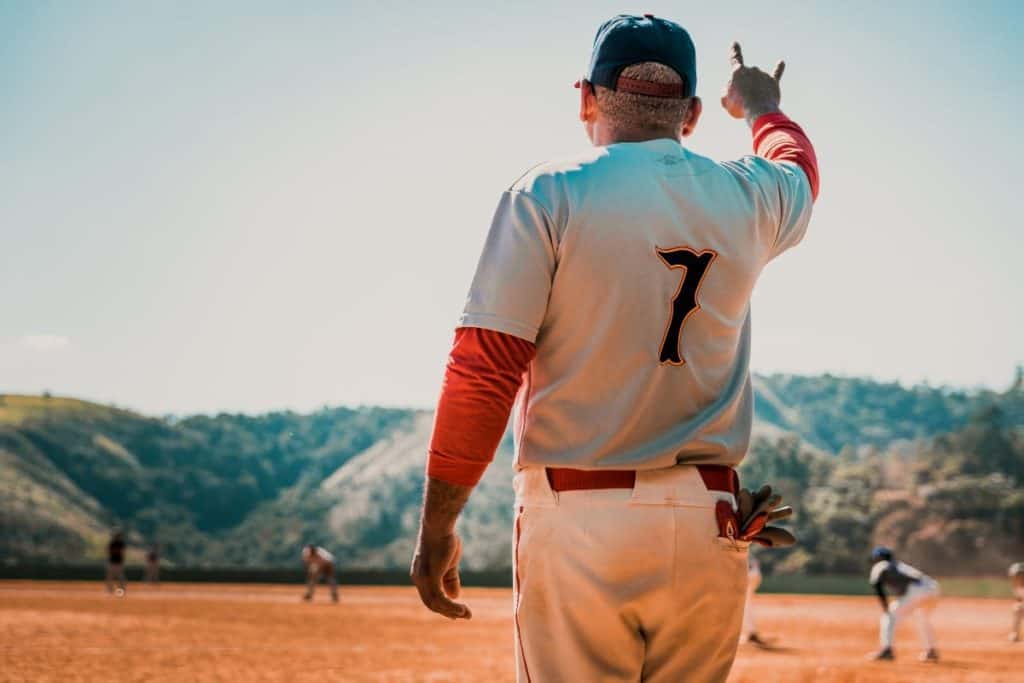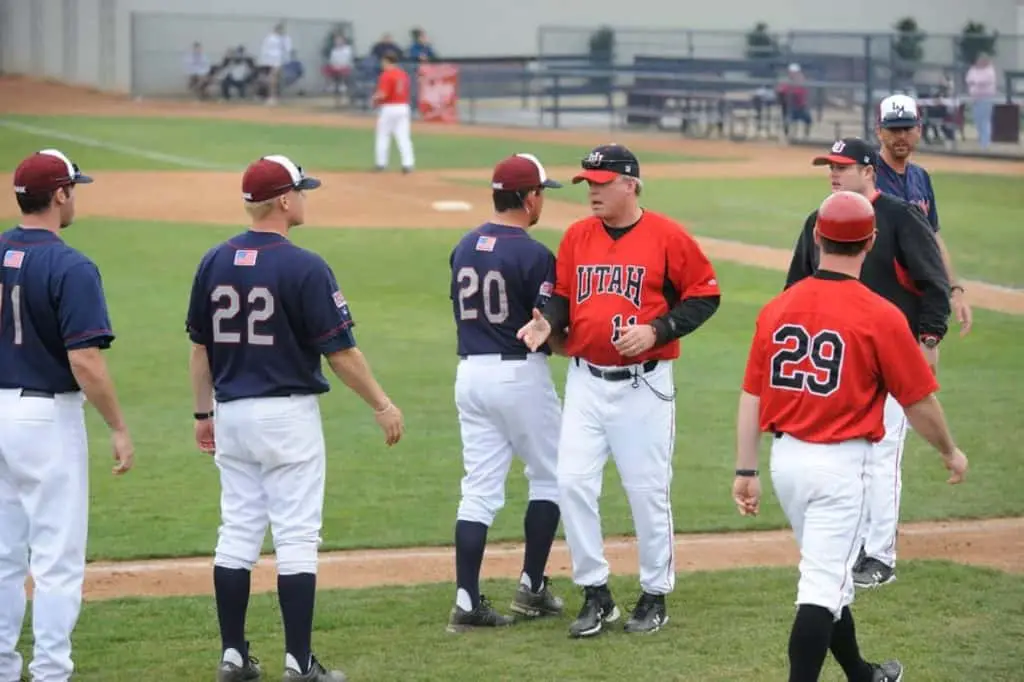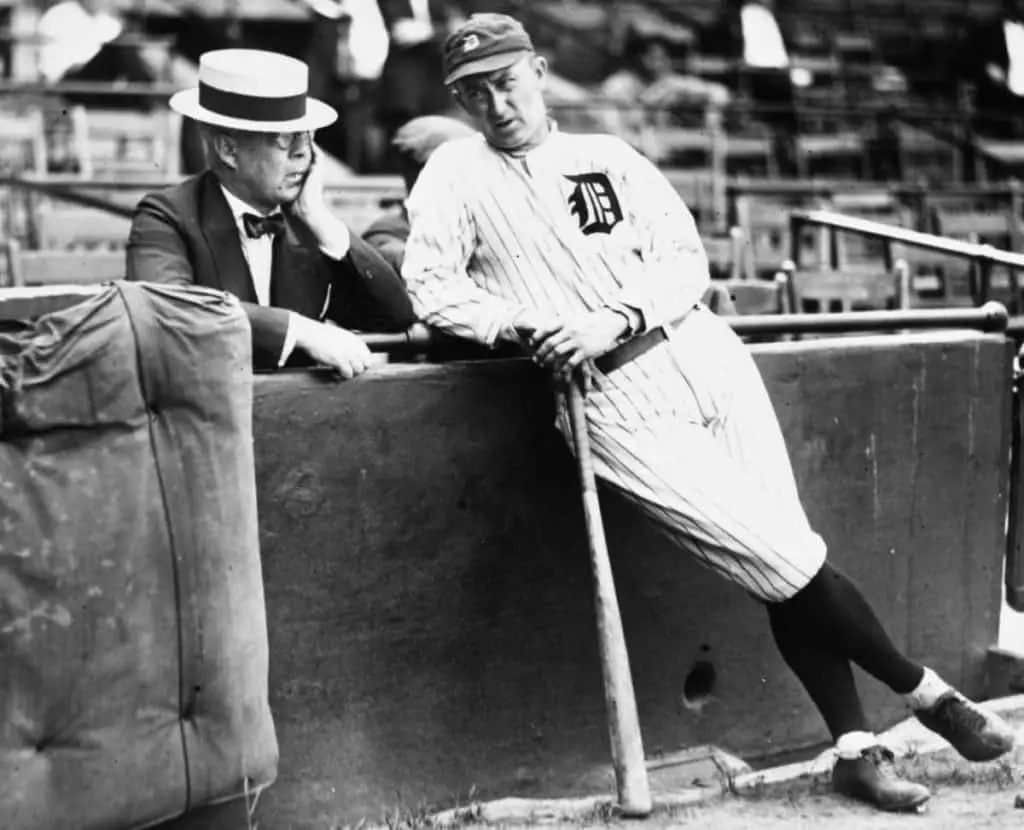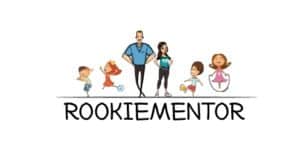The decorum and superstitions in baseball go back through a storied history, with legends like the curse of the Great Bambino, to the reluctance to step on the foul line. But, some other traditions have died hard, even in the game as it is played today. Baseball is one of the only professional sports where the coaches wear the same uniform as the players.

The primary reason that coaches wear uniforms in professional baseball today is that they used to wear them when player-coaches were very common and baseball is such a superstitious, history driven and centered sport that the coaches wearing uniforms has stuck as a trademark of the sport up to this day. Baseball coaches were players before they were old men who have to waddle their way out to the mound to change a pitcher.
Football coaches always have the team gear alongside that large set of headphones screaming at the quarterback, but there is no comparison to the tight spandex of baseball pants. Think about other professional sports like hockey, basketball, soccer: pretty much all of the coaches wear a suit and tie.
So why do baseball coaches suit up in the same uniforms that their players do when every other sport seems to have a clear distinction in the uniforms of the players and coaches or managers?
The answer is based on the origins of the game and the superstitious beliefs of being prepared for anything on the diamond, no matter how improbable. That includes doing things the same way for over a hundred years, even if it is no longer needed or times have changed.
Ownership Influence
The curse of the great bambino is a superstition that highlights a golden era of baseball.
During the turn of the century into the 1920s, baseball gained more notoriety as American’s found an American pastime that would aid in the beliefs of the time: hard work paying off and individual pastime pleasures. Even for players, the leisure of the time was hard not to get caught up in.
Babe Ruth was famous for smoking his cigars on the field, after all!
But suiting up with the woolen button-down uniforms and itchy wool hats that made the boys in pinstripes of New York City famous wouldn’t have been high on the leisure choice if coaches had the choice. However, that may not have always been the choice.
Upper management may have had a say in the uniform look for even coaches, orchestrating the look of the team from behind the scenes and forcing issues like players wearing matching garb and coaches leading in style with the same uniform as their players for advertisement and marketing purposes.
That for example the Oakland A’s. If we fast forward to the 1970s Oakland Athletics, we are given one of the most extreme top-down protocols from the upper management of any sports team probably in history.
Charlie Finely or Charlie O, was the owner who experimented with colored uniforms, neon-colored baseballs, and rode a horse out onto the baseball diamond, all in the name of ratings and always with a business mind. He also ran roughshod through nearly one manager a season on his way to creating a perfectly balanced world series caliber team for several years.
This owner not only asked his players to look their best and experimented with colors and designs to stand out, but demanded it.
These types of situations of commanding owners and players and coaches to be treated like commodities is a theme throughout the history of professional baseball until up to the arbitration deals and players organization the Major League Baseball Players Association(MLBPA) started in 1966.
But, even up until the 1990s, the MLBPA has organized strikes by the professional baseball players in the union to fight back against unfair treatment, that ended the 1994-1995 season.
Despite these strikes and a more magnanimous coaching, management, player relationship, coaches continue to wear the uniforms today and, although they may not be players, the history of the team captain has been absorbed by this position of manager or coach.

Player Coaches / Managers
Remember back on the schoolyard blacktop when the whole group of your friends and you would line up, hoping that the “team-captains” wouldn’t pick you last? One by one, those team captains would dish out their criticisms and respect based on how they chose each team.
If you were picked early, you obviously had some skills, picked near the end, it felt more like the team was doing you a favor by picking you. But when all was said and done and the teams were picked and separated, the team captains wouldn’t just sit in the dugout and make a batting order!
They were the best players on the field, batted 3rd, played shortstop and pitched, maybe even driving in the winning run.
The grassroots origins of the game of baseball made it a sport that was “just for fun” even as it became a professional paying sport. Many players had other jobs and worked in the offseason.
Because of this, the schoolyard rules seemed to apply; coaches were the “team captains” who made the batting orders and played as well. It wasn’t enough to leave it in the dugout, coaches were central players in professional baseball for decades all the way until 1986 when the final player-coach managed and played his entire season. But, player-coaches had once been very common.
The likes of famous names like Frank Robinson, Joe Torre, Jon McGraw, and Ty Cobb. The most recent player-manager was Pete Rose whose superstitions took place on the field and off as a gambler, getting him permanently kicked out of baseball in 1989 for betting on his own team. Rose has continued his indifferent ways away from the pitch (information for another article), but the truth is that as player-manager, the guy was a beast and led by example, bringing his club close to World Series glory several times and even hurting another player.
This reminds us of another badass player-coach by the name of Ty Cobb. Ty Cobb was famous for his vicious nature playing the game of baseball and would do anything it took to win, even sharpening his metal cleats so that they would cut people as he slid into a base.
I wonder how that would look in current day Baseball? Anyhow, leading by example in a sport where the players have longevity and can keep playing well into their wise years of experience is definitely possible.

League Rules
The rules of Major League Baseball shed more light on the issue of uniforms for both players and coaches, as well as managers. Rule 1.11, Section a, numbers 1 and 3 where it states:
“All players on a team shall wear uniforms identical in color, trim and style… No player whose uniform does not conform to that of his teammates shall be permitted to participate in a game.”
The official rulebook further goes on to state in Rule 2 that
“A COACH is a team member in uniform appointed by the manager to perform such duties as the manager may designate, such as but not limited to acting as base coach…”
Also in Rule 2, “THE MANAGER is a person appointed by the club to be responsible for the team’s actions on the field and to represent the team in communications with the umpire and the opposing team. A player may be appointed manager.”
Players being appointed managers can happen at any point in a game which begs the question: is suiting up like a player a nod to the days of old?
Overall in the game’s history, there have been 221 player-managers and over 50 of those being inducted into the major league baseball hall of fame.
The most recent example of player-coaching was more of a gimmick or shot at a boyhood dream, or at worst, a bet gone wrong. Gerardo Parra was allowed to be the player-coach in the 2000s and played three innings at 3rd base before taking himself out.
The bottom line is that no manager in the major leagues, with their contracts all north of 1 million dollars, is expecting to trot out onto the diamond and start competing against younger athletes.
The average age of baseball coaches is 50 years old and the average age of a baseball player is just over 27 years old.
Older coaches and managers have enough to worry about in this day and age with bullpens, cameras stealing signs and big ego players than to be worried about physical performance as well.

Summary: Why Do Baseball Coaches Wear Uniforms?
The fact that coaches and managers still wear jerseys is a throwback to the older days of baseball when players could also be coaches.
The superstitious and slow evolving game of baseball which is one of the professional sports that remains safely and reassuringly stuck in its ways will continue to have mangers suit up as a nod to a past of fielding and hitting skippers.
Cheers,
Daniel
